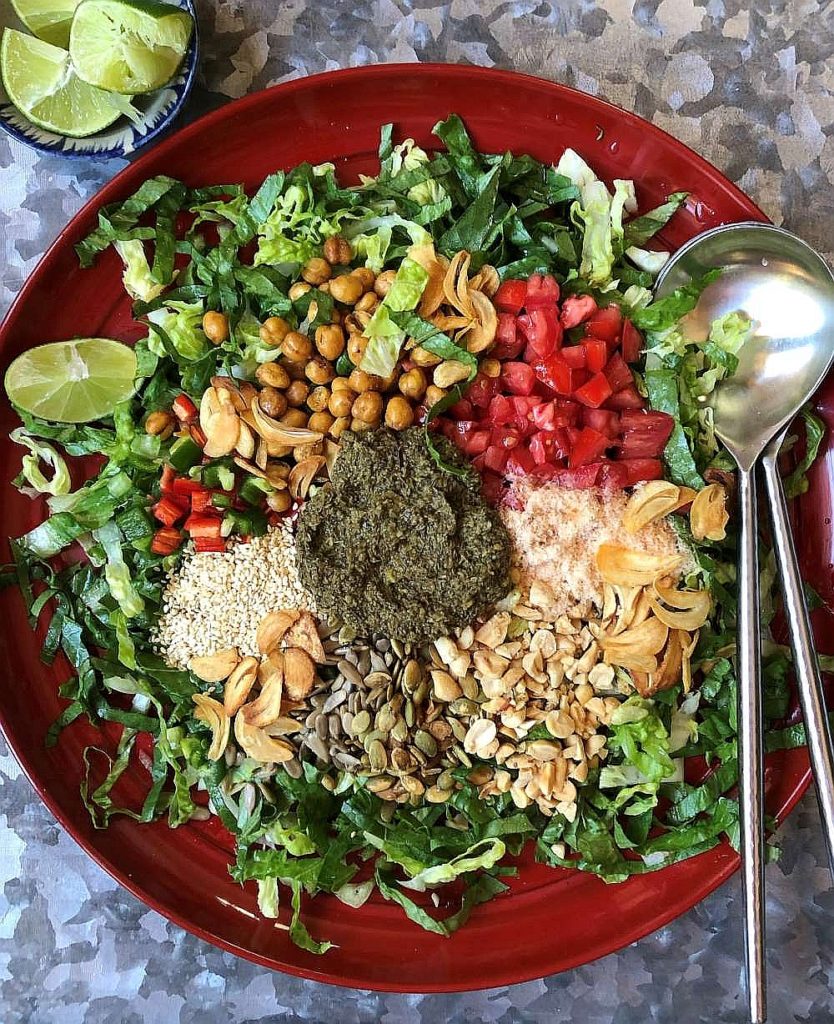
Burmese tea-leaf salad, a composition of chopped greens and lots of crunchy bits dressed in a savory, earthy pesto-like dressing intimidated me for years. The dressing seems incredibly complex and perplexing with its subtle layers of savory pungency. On top of that, to make the real deal, people say you must obtain fermented tea leaves from Burma. It's not an ingredient easily sourced from Ranch 99 market.
However, when I recently noticed prepared tea-leaf salad dressing sold at Mitsuwa market in San Jose, I rethought making it at home. The fermented tea-leaf dressing is made by Burma Superstar, a Bay Area mini-chain of Burmese restaurants. The restaurant also has a namesake cookbook written by Desmond Tan, one of the owners, and Kate Leahy, a friend of mine who's also among the best cookbook authors around. Their Burma Superstar cookbook includes considerable details about how tea leaves are harvested and fermented plus how to make the dressing.
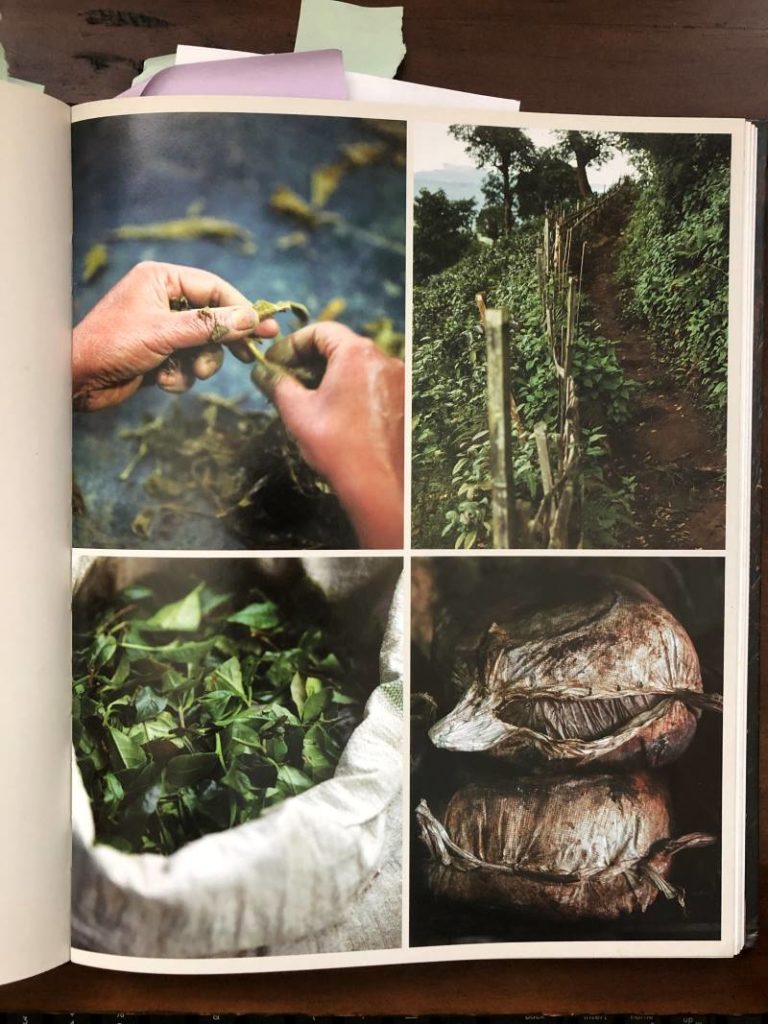
Exploring the 'Secret' Sauce
The purchased Burma Superstar tea-leaf dressing opened a door to explore laphet thoke foundations and to play a bit. There are traditional (with fish sauce) and vegan versions. Both are good and contain ingredients such as fermented tea leaf, garlic, ginger, plus layers of umami built in via dried mushroom, tomato, fish sauce and yeast extract.
Using the purchased dressing, I made tea leaf salad on and off for a week. I realized that it's an elastic dish that looks complicate but is pretty easy. Like the Thai miang kham leafy salad bites, the most crucial thing is the dressing. You can somewhat improvise on the rest.
In the Burma Superstar cookbook, Desmond and Kate provided a formal recipe for the dressing using fermented tea-leaf from Burma. But on the opposite page, there was a shortcut hack involving loose leaf tea. I experimented with the technique to come up with this recipe for you to use. In the photo below, Burma Superstar's dressing is at the top and my homemade is at the bottom.
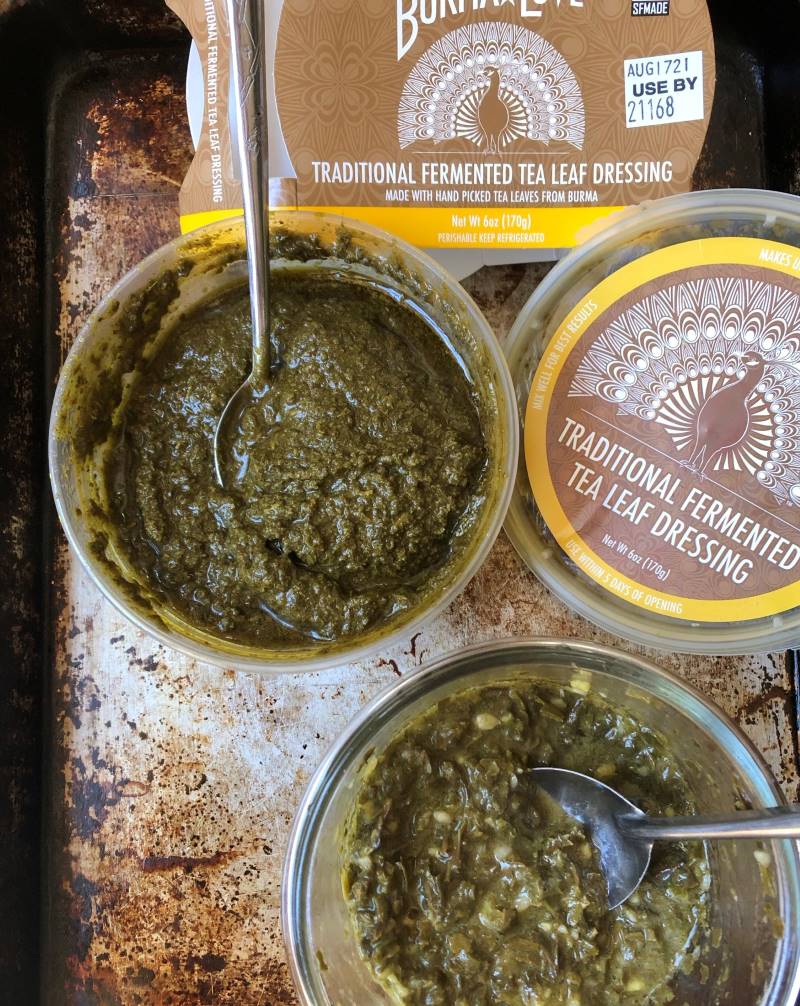
Fully Fermented vs Shortcut Tea Leaf Dressing
Compared to Burma Superstar's, my homemade lacks a certain fermented funk that comes from the tea leaves resting in the dark for a long period of times. In their book, Desmond and Kate explain that there's a bamboo shoot taste in fermented tea-leaves. Additionally, different grades of tea may be used and the dressing color reflects that. There's a certain addictive quality to the dressing, too. I imagine that months of fermentation adds to that. Maybe some cooks add a touch of MSG or Asian mushroom seasoning granules, too.
Instructions for creating a tea-leaf dressing shortcut were simply to brew tea with the leaves, leave them to ferment for a couple days till they smelled like overripe fruit then whirl them up with seasonings and oil in a small processor. I did that using fancy tea that I regularly drink (why waste) and found that the fermentation didn't do much for my tea. I opted to skip that, saving about 2 days of waiting.
Though my homemade tea leaf salad dressing wasn't as complex as Burma Superstar's, it was darn good, once combined with all the goodies on the salad platter. So, if you're not near a source for Burma Superstar's tea leaf salad dressing, make your own!
Blending Tea for Tea-Leaf Dressing
Reading the background information on fermented tea leaves, tasting the purchased laphet thoke dressing, and tinkering in the kitchen led me to blend the tea. I used a 2-to-1 blend of green tea with bold oolong to achieve a flavor that mimicked that of the purchased dressing.
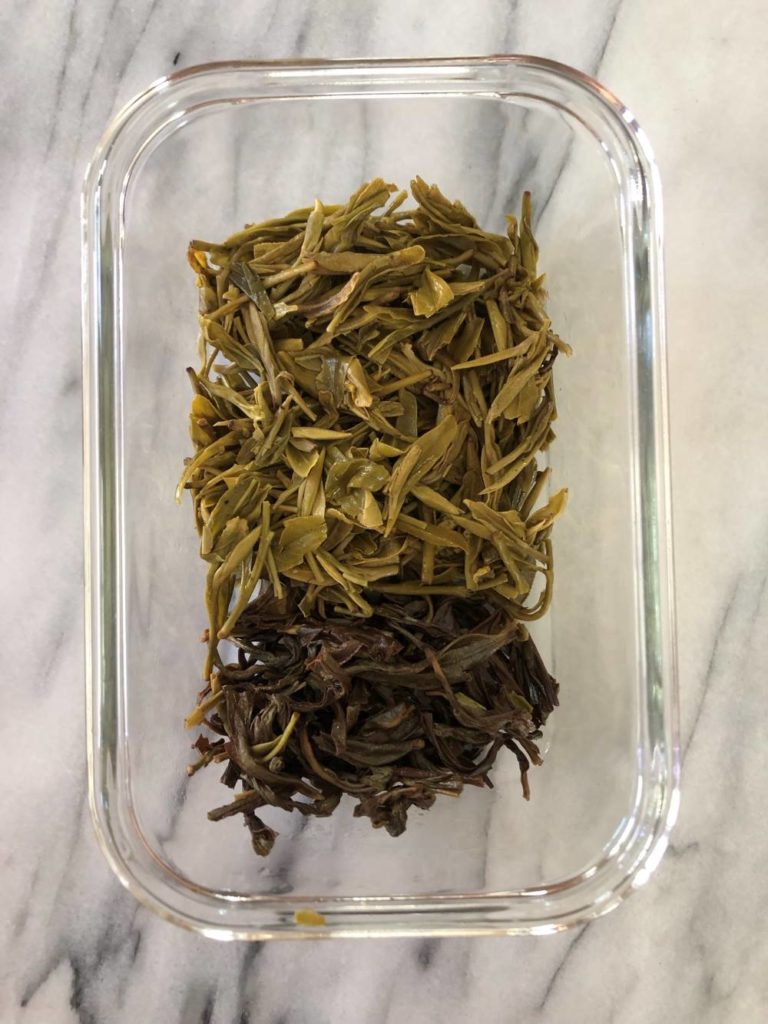
What kind of tea did I use? Desmond and Kate explain that the Burmese mainly grow Assam tea. In the DIY tea leaf dressing, they called for green tea, such as Dragonwell or Sencha. I imagine a mild-tasting Assam would work well too.
I didn't have Assam and wanted to follow the book's recipe. I like loose leaf teas sold by vendors such as In Pursuit of Tea and CC Fine Tea. They're well crafted, responsibly sourced and of excellent flavor. Given what I had on hand, for the green tea portion of the dressing, I used IPT's Bhutanese Thunder Dragon (Bhutan is sort of close to Burma, you could also use tea from Yunnan) and CC's Dragonwell (as suggested in Burma Superstar). For a deep note, I brewed Phoenix oolong.
Good tea leaves may be steeped many times before the leaves are spent. However, since Burmese tea leaf dressing has a tannic, buzzy (slightly caffeinated) edge, I steeped my tea twice before deeming them ready for making dressing.
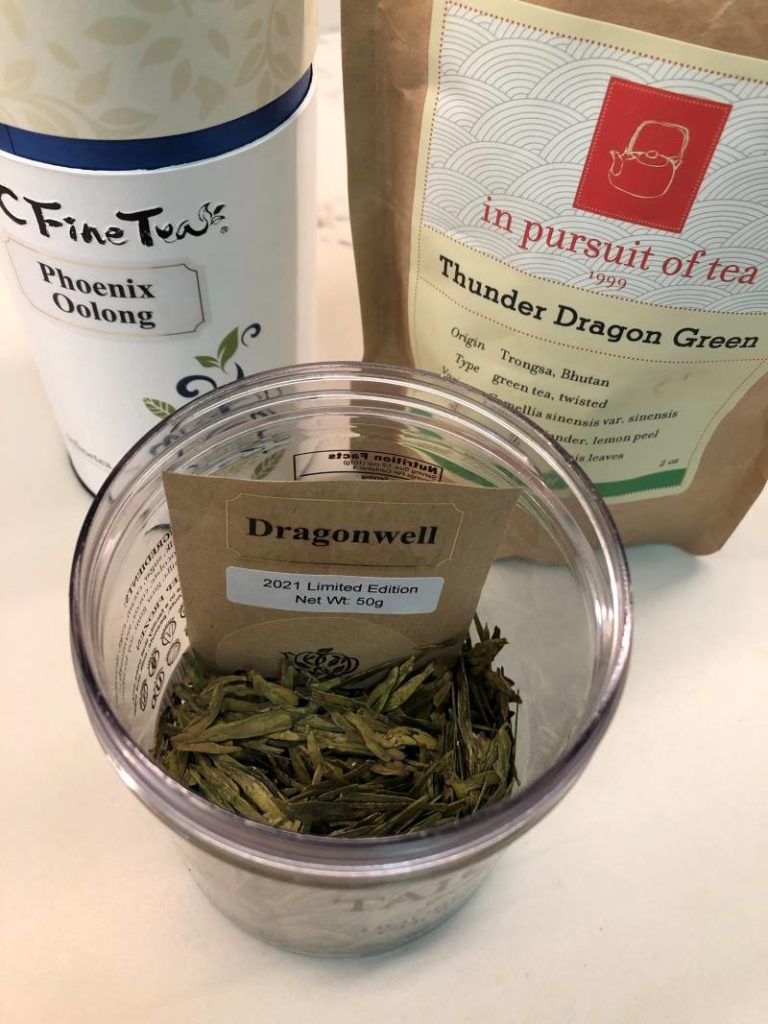
Did I brew the different teas all together, all at once? Heck no. I brewed each one separately, drank it over the course of a day or two, then transferred the leaves to a small container (below). When I had what I needed, I made tea leaf dressing. It's no waste cooking. (My tea pot uses 1 tablespoon of tea at a time.)
How to Make Fried Garlic Chips
Garlic chips may seem like an optional ingredient but garlic has umami. The handsome fried chips are easy to make and the leftover garlicky oil is great in the dressing! Here's a quick video to encourage your adventure:
These fried garlic chips are also fabulous for munggo, a wonderful Filipino mung bean stew.
Crisp, Crunchy, Briny Options
Now you can have fun. You need a bed of crisp lettuce or cabbage. Add tomato for color, juiciness and umami. There are often fried lentils in Burmese tea leaf salad; the crunchy yellow lentils are ubiquitous in the cuisine but unless you're going to use lots of them and batch cook them, it's an investment of time to make ¼ cup for one recipe.
Given that, I've subbed store-bought roasted chickpeas and soynuts. When I recently asked Kate, she said to skip the legume if you want, and increase the peanuts and/or seeds. Naomi Duguid, in Burma, suggests the same workaround.
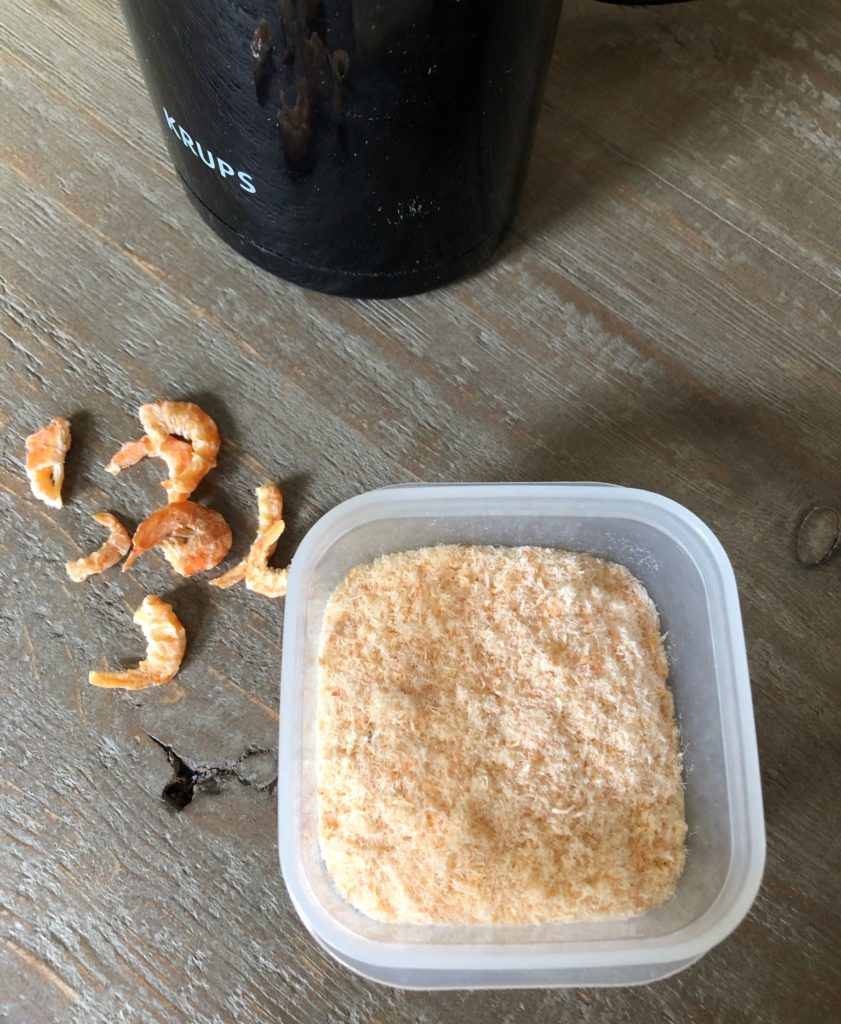
Toasted, roasted seeds are included for nuttiness and you can vary those too. I blended sunflower and pepitas for the version at the top. Some days I included sesame seeds. Other days, I skip them. The ground dried shrimp is simply processed in coffee grinder (I use it for spices only), but I've skipped it many times, opting to drizzle a little fish sauce or seasoning with a bit of extra salt.
You need some stuff atop the greens so at the least have tomato, fried garlic, and nuts. The dressing will bring it all together.
What to drink with Burmese Tea Leaf Salad
After spending all that time making the salad, serve it with flair. Kate is a wine pro who's also written several books on food and wine, including Wine Style. I typically order beer at a Burmese restaurant but Kate offered this advice to expand my options:
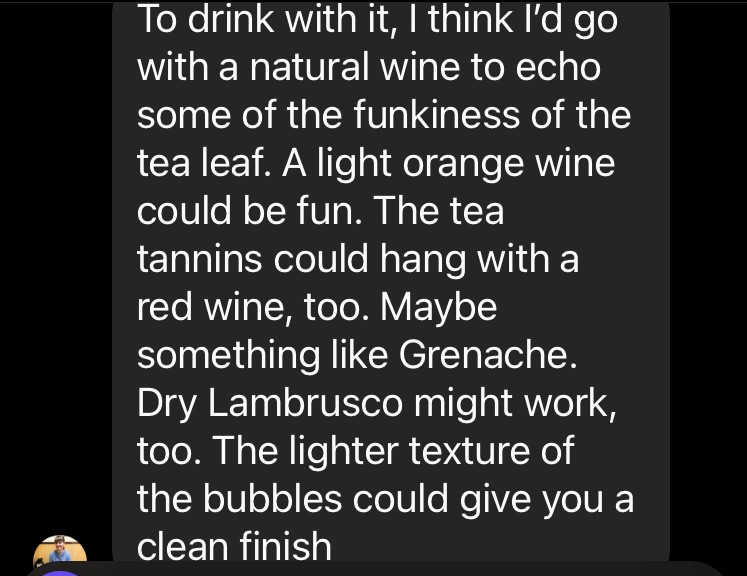
I'm no longer intimidated by Burmese tea leaf salad because I now better understand it and can now make it myself. I hope you do too!
More Burmese recipes
Fried Garlic Chips
Ingredients
- ¼ cup thinly sliced garlic
- About ⅓ cup neutral oil such as canola or peanut
Instructions
- Put the garlic in a small saucepan and pour enough oil in to cover. Heat over medium-low until gently sizzling. Let fry for several minutes, until pale golden. They won’t be crisp. At this point, pick up the pan and swirl it to continue cooking the garlic but slowing things down so you may monitor progress.
- When a shade darker, pour through a mesh strainer set over a small bowl. Allow the garlic to rest a few minutes then spread out on a paper towel to finish cooling and crisping before using (or cover and leave at room temperature for up to 2 days).
Notes
Burmese Tea Leaf Salad
Ingredients
Quick Tea-Leaf Dressing
- 3 tablespoons loose green tea leaves, such as sencha or Dragonwell
- 3 cups just-boiled water
- 1 garlic clove, coarsely chopped
- 1 tablespoon coarsely chopped peeled ginger
- ½ teaspoon fine sea salt
- ½ teaspoon fish sauce (optional, for a bit of funk)
- ¼ cup fried garlic oil (from above), or canola or peanut oil
- 1 ½ teaspoon distilled white vinegar, or 2 teaspoons apple cider vinegar
Salad
- 5 to 6 packed cups (8.5 oz) thinly sliced crisp lettuce (Romaine, Little Gem), or cabbage (green or Napa)
- 1 teaspoon fish sauce, or 2 or 3 pinches fine sea salt
- 1 cup diced tomatoes (Roma, early girl, or cherry)
- ¼ cup chopped, seeded moderately-hot chile (1 large, or 2 small Fresno, jalapeño, or long chiles)
- 3 to 4 tablespoons fried garlic chips (recipe above)
- ¼ to ½ cup unsalted roasted peanuts, finely chopped (use more if not using fried legume)
- ¼ cup roasted chickpeas, soynuts, or fried yellow split peas (optional)
- ¼ cup roasted sunflower or pumpkin seeds
- 1 tablespoon toasted sesame seeds
- 2 tablespoons dried shrimp powder (optional)
- 1 whole juicy lime, quartered
Instructions
- To make the dressing, steep the tea leaves in hot water for 3 minutes. Drain well, pressing out excess water. (Feel free to drink the tea.) Cool the leaves to room temperature. (Alternatively, in batches, put the tea through 1 or 2 steepings over the course of days and refrigerate the leaves till you’re ready to make dressing.)
- In a small food processor, whirl the garlic, ginger, and salt to a minced state. Add the tea leaves and whirl to a fine texture. Add the oil, vinegar, and fish sauce, then pulse to combine. You should have a scant ½ cup.
- To assemble salad, make a bed of lettuce on a rimmed serving platter. Drizzle on the fish sauce or sprinkle on the salt. Like flower petals, arrange piles of tomatoes, chile, fried garlic, peanuts, roasted chickpeas, sunflower seeds, sesame seeds, and shrimp powder. Scrape the dressing into the center. At the table, squirt on half of the lime wedges and toss the salad. If diners want more tartness, let them add extra lime juice.













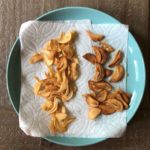
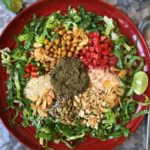




Matt says
Andrea, do you have a platonic ideal for fried lentils?
I've seen recipes where people treat it as a fritter where they take cooked lentils, rice flour, and shallow fry them. But I've also seen recipes where people soak lentils over night and fry in oil similarly to how you made the garlic chips.
Andrea Nguyen says
Hi Matt, I've soaked the lentils then fried them. I once had them at a restaurant where the lentils were NOT soaked before frying. Oh man, it felt like my teeth were falling out when I tried to chew on the hard bits!
Shuku says
I'd only JUST put together ingredients for making lahpet thoke and I come across this! Serendipity is the right word - I'm able to get the fermented tea leaves here by mail order but I wanted to try and see how it stacked up against the recipes I've seen for homemade fermented lahpet. Now I definitely have to try the DIY version!
I also made banh xeo this afternoon using your recipe, and it was *excellent*. I can't remember a better banh xeo out of the ones I've made! I'm missing Vietnam today - I have some good friends there and we had planned to visit until the pandemic showed up - so it definitely soothed a deep need for connection. If I can't visit Vietnam, I'll bring it to me, and your recipe certainly did that. Thank you!
Andrea Nguyen says
Hoooray!!! Brilliant minds cook the same.
JT says
I needed a dupe for Burma Superstar's Tea Leaf Salad, and this is perfect! I opted out the lemon, and it was perfect! Thank you for this recipe!
Andrea Nguyen says
You're so welcome! I'm stoked that the recipe was of help. Enjoy!